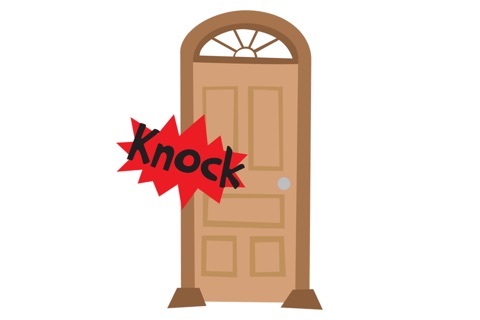
Knock Knock Numbers - Joke Telling and Conversations Tool for Autism, Aspergers, Down Syndrome & Special Education
KNOCK KNOCK!
Who’s there?
One!
One who?
One-derful to meet you!!
Get ready to laugh (and groan!) as you practice numbers and humor with 20 classic knock knock jokes.
Knock Knock Numbers was designed by a BCBA as a fun way to teach kids how to tell knock knock jokes, while working on number recognition. The app teaches 20 different jokes and each one prompts the user to identify a number between one and ten. Settings allow the user to choose how many numbers are presented each trial.
Telling jokes is an important developmental skill that allows children to improve communication while connecting socially with others. Humor is especially important for children with autism because studies have shown they often exhibit delays in relating to their peers, in standard cultural conventions and in understanding the emotional states and intentions of others (Hobson, 1989; Baron-Cohen, 1989; Hobson, 1986a, b; Lord, 1993; Loveland, 1991; Mundy,1995).
Humor is a huge part of cognitive and social development, and studies have shown that children with autism tell significantly fewer jokes than their typical peers. The skills necessary for joke telling, such as language skills and the ability to connect with others are often found to be lacking in people with autism.
Not being able to understand humor, or inspire laughter in others can negatively affect the development of relationships, and of cultural participation. With children with autism, this could lead to a further deterioration of social skills and interpersonal relationships (Alford, 1983).
Laughing involves the "integration of cognitive, social and affective factors" (Semrud-Clikeman 2010) and therapies involving teaching joke-telling may help to improve these behaviors.
Studies have found that interventions aimed toward children diagnosed with autism that use jokes or “humour and laughter clearly have a strong basis to work” (Reddy 2002) in improving social skills and relationships with peers.
Knock Knock Numbers is one such intervention that lets the user learn and practice telling jokes in a fun way while teaching basic number concepts. The jokes that are learned in the app can be used to inspire laughter and friendship in any social situation.
Research:
Alford, K. (1983). Privileged play: Joking relationships between parents and children. In F. E. Manning (Ed.), The world of play (pp. 174–189). New York: Leisure Press.
Baron-Cohen, S. (1989) . The autistic child’s theory of mind: A case of special developmental delay. Journal of Child Psychology and Psychiatry, 30, 285 –298.
Hobson, R. P. (1986a). The autistic child’s appraisal of expressions of emotion. Journal of Child Psychology and Psychiatry, 27, 321 –342.
Hobson, R. P. (1986b) . The autistic child’s appraisal of the expressions of emotion: Afurther study. Journal of Child Psychology and Psychiatry, 27, 671 –680.
Hobson, R. P. (1989). Beyond cognition: A theory of autism. In G. Dawson (Ed.), Autism: Nature, diagnosis and treatment (pp. 22-48). New York: Guilford.
Lord, C. (1993). The complexity of social behaviour in autism. In S. Baron-Cohen, H. Tager-Flusberg, & D. Cohen (Eds.), Understanding other minds: Perspectives from autism (pp. 292 –316). New York: Oxford University Press.
Loveland, K. (1991). Social affordances and interaction II: Autism and the affordances of the human environment. Ecological Psychology, 3, 99 –120.
Mundy, P. (1995) . Joint attention and socio-emotional approach behaviour in children with autism. Development and Psychopathology.
Reddy, V., Williams, E., & Vaughan, A. (2002). Sharing humour and laughter in autism and Downs syndrome. British Journal of Psychology, 93(2), 219.
Semrud-Clikeman M. and K. Glass J. Child Neurol. Epub ahead of print (2010) PubMed



